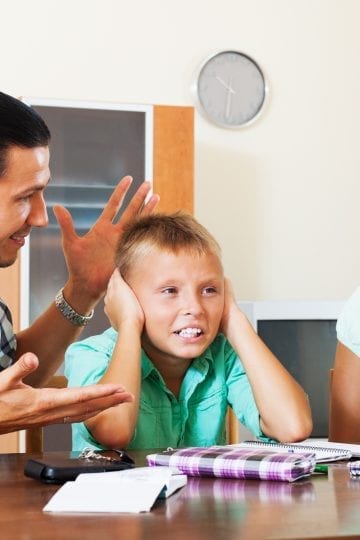The inability to differentiate sounds, or phonological awareness, is the root of the dyslexic’s struggle to use the sound-symbol system (phonics) in reading and spelling. Difficulty with rhyming words is a common indicator. While some students simply lack phonological and phonemic awareness, others have an auditory processing disorder that affects more than dealing with the sound of language and phonics. Treatment for auditory processing disorder is not easy.
An auditory processing disorder is not the same as a hearing problem. The American Speech-Language-Hearing Association states, “Auditory processing disorder refers to how the central nervous system uses auditory information.”
Auditory processing disorder has symptoms that overlap many other challenges, and can be properly diagnosed only by an audiologist. In auditory processing disorders, any physical impairment to the auditory “hardware” has been ruled out, but the brain still has trouble processing the “signal.” So while the individual’s actual hearing is just fine, their brain has trouble making sense of the incoming auditory information.
At Wings to Soar Online Academy, we offer the Fast ForWord intensive intervention that can be part of your treatment for auditory processing disorder. We typically recommend this more intensive package for those with auditory processing concerns who are also significantly behind in reading and also have concerns in one or more of the cognitive skills of memory, attention, processing speed, and sequencing.
An audiologist’s diagnosis of central auditory processing disorder (also known as auditory processing disorder or auditory processing deficit) may include impairment in one or more of the following listening tasks:

We’ve provided this set of Phonological and Phonemic Awareness Assessment and Exercises as an informal assessment and a starting point for intervention. If your student has significant difficulty with the exercises after working on them together for a few weeks, you may wish to seek further assessment from an audiologist to rule out auditory processing disorder. You may also want recommendations to begin treatment for auditory processing disorder if the student has other symptoms related to auditory processing disorder beyond sound phonological awareness.
At Wings to Soar Online Academy, we work with you to create a customized package that includes the programs that are just right for your unique situation. If you have curriculum that is already working for a particular learning area, we respect that and don’t want you to feel you need to enroll in more than you need with us. We want to come alongside you to help you fill in the gaps of what isn’t working. Please explore the menu of possible online programs that we offer at Wings to Soar that we could include in your child’s Path to Success™ Personalized Learning Plan on our Learning Solutions page.
Check out this recording of a recent Virtual Open House with our founder to get an overview of how Wings to Soar works.
If you haven’t already purchased your child’s Just-Right Level™ Assessments, get started there.
Get Started with Assessments